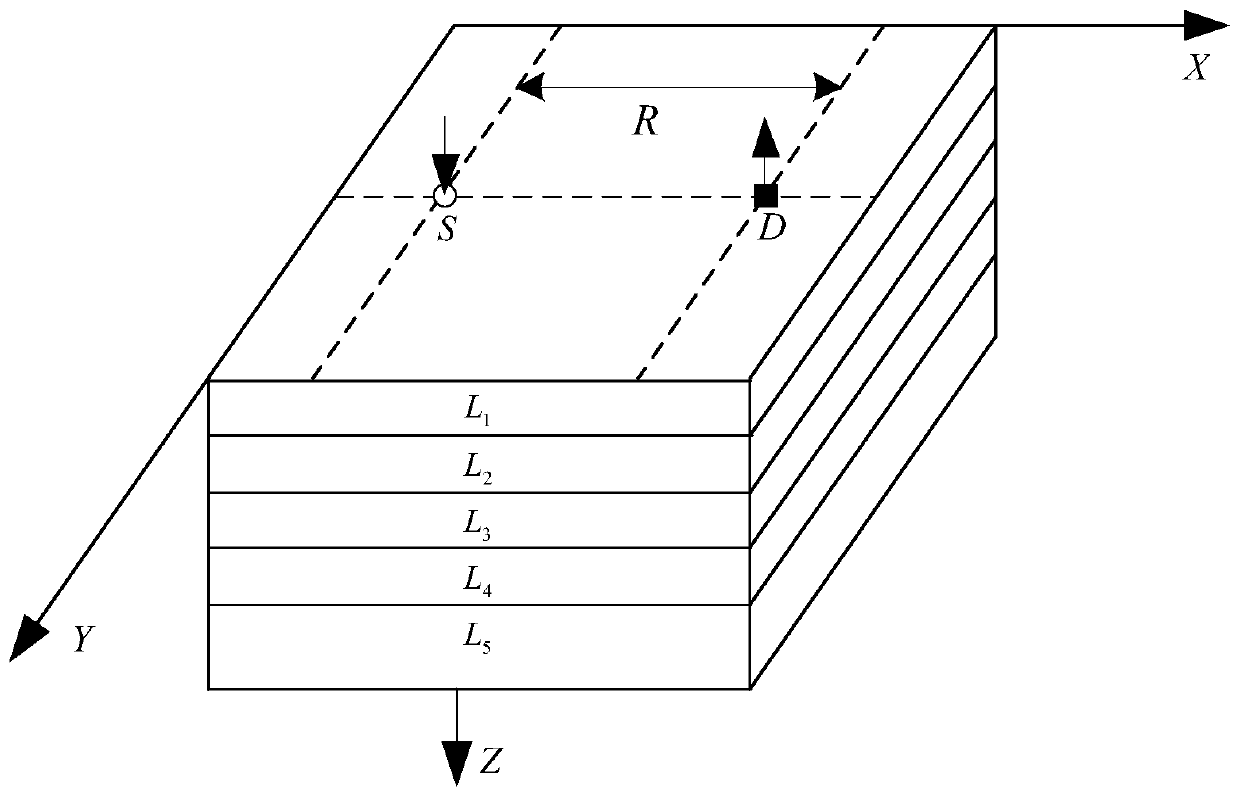Near-infrared Brain Function Signal Processing Method Based on Total Least Squares Method
A least square method and signal processing technology, which is applied in medical science, using spectrum diagnosis, diagnosis, etc., can solve the problem of low precision of signal detection and extraction, and achieve the effect of suppressing error interference
- Summary
- Abstract
- Description
- Claims
- Application Information
AI Technical Summary
Problems solved by technology
Method used
Image
Examples
specific Embodiment approach 1
[0029] Specific implementation mode one: combine figure 1 , figure 2 Describe this embodiment, the near-infrared brain function signal processing method based on the total least squares method of this embodiment, specifically is realized according to the following steps:
[0030] Step 1: Place a near-infrared probe composed of a five-wavelength light source S and a detector D on the surface of the scalp of the brain tissue to be tested. The linear distance between the light source S and the detector D is R, and the near-infrared light emitted by the light source S is The wavelengths are λ 1 , lambda 2 , lambda 3 , lambda 4 and lambda 5 , the detector D is used to obtain the diffuse reflection light intensity in the quiet state of the brain and the diffuse reflection light intensity in the brain-induced excitation state, so as to obtain the optical density of five different wavelengths of near-infrared light at the same distance R from the detector D Time signal of varia...
specific Embodiment approach 2
[0049] Specific embodiment two: the difference between this embodiment and specific embodiment one is: 5mm≤R≤40mm in the first step;
[0050] Among them, R represents the linear distance between the light source S and the detector D.
[0051] Other steps and parameters are the same as those in Embodiment 1.
specific Embodiment approach 3
[0052] Embodiment 3: This embodiment is different from Embodiment 1 to Embodiment 2 in that: the R is 5mm.
[0053] Other steps and parameters are the same as one of the specific implementation modes 1 to 2.
PUM
 Login to View More
Login to View More Abstract
Description
Claims
Application Information
 Login to View More
Login to View More - Generate Ideas
- Intellectual Property
- Life Sciences
- Materials
- Tech Scout
- Unparalleled Data Quality
- Higher Quality Content
- 60% Fewer Hallucinations
Browse by: Latest US Patents, China's latest patents, Technical Efficacy Thesaurus, Application Domain, Technology Topic, Popular Technical Reports.
© 2025 PatSnap. All rights reserved.Legal|Privacy policy|Modern Slavery Act Transparency Statement|Sitemap|About US| Contact US: help@patsnap.com



